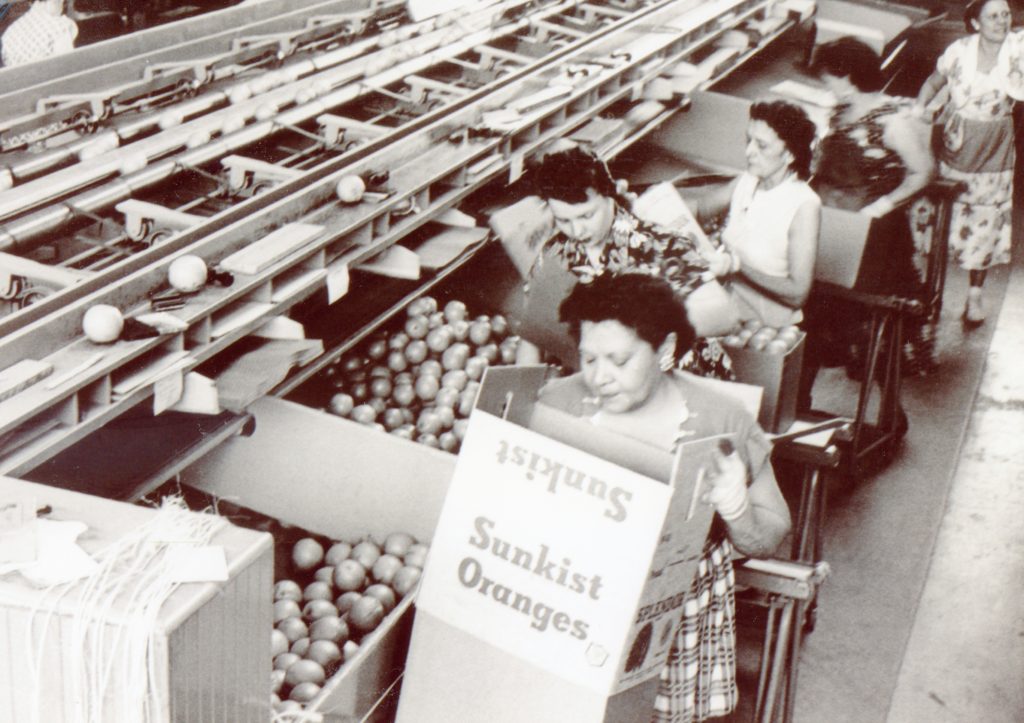
While the cardboard box has been around for over 150 years, when it came to shipping fruit and vegetables it would take many decades of refinement before the growers made the switch from wood to cardboard. During World War I the growers did make an attempt to use cardboard containers, but was deemed a failure. Those early boxes had two major flaws, they were not durable, and with no ventilation the produce quickly spoiled.
During the critical lumber shortage during World War II, the War Production Board asked the citrus industry to work with the Container Corporation of America, experimenting with the cardboard carton as a substitute shipping container. The growers complied, despite the far greater cost. They also experimented with mesh bags. Neither, however, proved satisfactory. The lack of proper ventilation in the cartons resulted in considerable spoilage and the lack of protection from the bag resulted in bruised fruit.
After the war ended, however, paper companies continued to refine the cardboard carton. The new containers were called half cartons because they were half the size of the standard wooden box. Grocers preferred them because they were easier to handle—-and empty cartons made great “carry home boxes” for customers.
Some citrus growers by the early 1950s had met with success with the cardboard boxes. Fruit Growers Supply Company, along with its parent company Sunkist Growers were still reluctant. One company official thought cardboard was just a passing fad. A fad it was not, and on November 1, 1955 Sunkist adopted the cardboard carton the package of choice, and the wooden box was now a part of history. Fruit Growers Susanville box factory curtailed production but continued making wooden picking boxes until 1961.